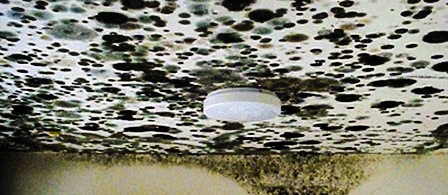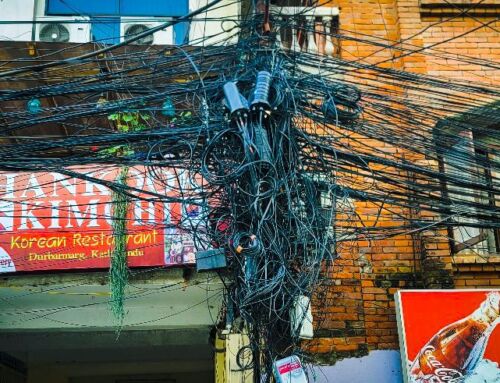View by Topic
Recent Articles
-
Federal Government Finalizes New Efficiency Standards for LightbulbsSaturday, April 13th, 2024
-
2024 IECC is Final After Addressing Preemption IssuesSaturday, April 6th, 2024
-
Settlement Portends Broad Failure in Attempts to Ban Natural GasSaturday, March 30th, 2024
-
SEC Climate Disclosure Rule Stay and Venue Now in the 8th CircuitSaturday, March 23rd, 2024
-
EV Charger Data ApocalypseSaturday, March 16th, 2024
View by Month/Year
“Green Building Law Update” Headlines
Recent Articles & News from
Stuart Kaplow’s blog
at GreenBuildingLawUpdate.com
- Shedding Light on the Future: The Evolution of Lightbulbs in the Wake of New Energy Efficiency Standards April 14, 2024
- 2024 International Energy Conservation Code is Final After Addressing Preemption April 7, 2024
- Settlement Portends Broad Failure in Attempts to Ban Natural Gas March 31, 2024
- SEC Climate Disclosure Rule Stay and Venue Now in the 8th Circuit March 24, 2024
Subscribe to the Green Building Law Update!
Stuart Kaplow brings his expertise and extensive experience to the table with his unique digital publication, "Green Building Law Update". Subscribers receive regular updates to keep them informed about important issues surrounding Environmental Law, Green Building & Real Estate Law, as well as the emerging demand for Environmental Social Governance (ESG).
Get fresh content through the lense of Stuart Kaplow's cutting-edge expertise, innovative commentary and insider perspective. Don't miss another issue! Subscribe below.

Mold can be Arrested in the Marketplace
Concern about exposure to indoor mold has been increasing as the public becomes sensitive to issues of building occupant health and wellbeing.
Mold problems in buildings have in large measure been exacerbated by changes in building codes and construction practices that began in the 1970s. In the quest to be more energy efficient, buildings are more tightly sealed, with minimum ventilation rates that are intended to provide indoor air quality that is acceptable to human occupants but often has the unintended consequence of allowing moisture buildup and resultant environmental externalities, including mold. Moreover, many modern materials, such as drywall, do not allow moisture to escape easily.
Some suggest mold is an externality of green building.
It is time for more and better science about mold including methodologies to minimize adverse health effects. Adverse health impacts from mold can most efficiently be recognized by the marketplace and enforced by the rule of law in state courts in lieu of new top-down government regulation in this area.
There are no EPA regulations or other federal standards for airborne mold contaminants. Maybe more correctly stated, there is no government enforcement mechanism or Threshold Limit Values for airborne concentrations of mold, or mold spores.
Mold is a microscopic form of fungi. Mold is found nearly everywhere both indoors and outdoors. Mildew refers to certain kinds of mold. Mold growth is encouraged by warm and humid conditions, although it can grow during cold weather also. There are many thousands of species of mold and they can be in any color, including white, orange, green, brown or black. Most fungi, including molds, produce microscopic cells called “spores” that spread easily through the air. Live spores act like seeds, forming new mold growths (colonies) when they find the right conditions. All of us are exposed to fungal spores daily in the air we breathe, both outside and inside.
Most, if not all, of the mold found indoors comes from outdoor sources. Indoors it grows and become a problem when there is water damage, high humidity or dampness. Mold needs moisture to grow. Common sources of indoor moisture that can cause mold problems include flooding, roof and plumbing leaks, damp basements or places where moist air condenses.
Small amounts of mold growth in workplaces or homes are not a major concern. When molds are present in large quantities, they may cause nuisances and health problems for some people.
Most people will have no reaction when exposed to mold. Allergic reactions, similar to pollen, including runny nose, eye irritation and skin rash, are the most common health effects for individuals sensitive to mold. Flu-like symptoms, such as cough, congestion, headache and fatigue may also occur. Some individuals are more sensitive than others, including possibly infants and children, individuals with respiratory conditions or allergies and asthma, and persons with weakened immune systems.
Most symptoms are temporary and are eliminated by correcting the mold problem.
Some mold can produce toxic substances termed mycotoxins. Airborne mycotoxins have not been shown to cause health problems to occupants in residential or commercial buildings. The health effects of breathing mycotoxins are not well understood and requires more study.
The fake news sometimes refers to “black mold” or “toxic black mold.” It is at times associated with the mold Stachybotrys Chartarum, a type of greenish-black mold commonly arising from significant water damage. Known health effects are similar to other common molds. EPA has made clear, early reports of severe effects have been put in doubt by later research.
In most instances when visible mold is present, sampling is unnecessary. Since no EPA or other federal limits have been set for mold or mold spores, sampling or testing cannot establish a building’s compliance with a nonexistent government standard; and that is not a bad thing. Surface sampling may be useful to determine if an area has been adequately cleaned or remediated.
It is time for the problems of mold to be addressed when Americans, on average, spend approximately 90% of their time indoors. We need more and better science about adverse health effects of mold, including an examination by the environmental industrial complex of mold as an externality of green building?
Adverse health impacts from mold can most efficiently be policed by the marketplace and enforced by the rule of law.









